Deborah Swift's Blog, page 47
October 13, 2011
Limning - the exquisite art of the Tudor miniature
 Limning is a thing apart from all other painting or drawing, and it excelleth all other painting whatsoever in sundry points
Limning is a thing apart from all other painting or drawing, and it excelleth all other painting whatsoever in sundry points
Nicholas Hilliard
'Limning' was the contemporary term in Tudor and Stuart times for miniature paintings, portraits which were portable and could be held in the hand. In the days before photography, these likenesses were much prized, and the making of them was considered to be a specialised art, apart from general portrait painting with its own skills and techniques. Many of these special techniques stemmed from those used in medieval manuscript illumination.
Miniatures were designed to be worn as pieces of jewellery too and were kept protected in delicate cases of gold or ivory, or stored in cabinets of rare imported woods. Most limners were also jewellers, as was the case with Nicholas Hilliard, probably England's best known limner.
The painting was done on vellum, the skin of an unborn calf, which is hairless and made the fine surface needed for such small work. It was then backed onto card - often a playing card to give enough rigidity. Dry colours were bought from the apothecary and mixed with a binder in mussel shells. The brush - then known as a pencil- was made from one or two squirrel hairs.
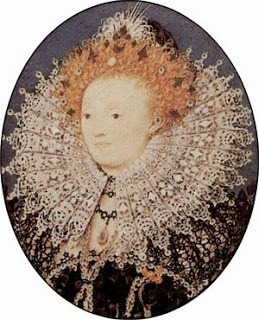
The elaborate clothing in court portraits as in the one of Elizabeth I, left, was brought separately to the studio so that Hilliard could paint the detail without tiring the sitter. This portrait, somewhat idealized, was painted when Elizabeth was in middle age.
Real gold and silver were applied with gum arabic and burnished using an animal tooth set into a handle. To give the crisp effect of lace a more solid white pigment was dribbled painstakingly into its intricate pattern to leave a slightly raised effect. An even heavier paint was used to make raised droplets of "pearls". The sitters often appear paler than they would have when the painting was new because the Red Lake pigment fades in the light.
In Hilliard's Treatise concerning the Arte of Limning he tells us he is extremely fussy about cleanliness, and will not allow coal fires to burn where he is working, lest soot should fall on his work. Even more he urges those who wish to paint miniatures to wear only silk so that particles of lint and fibre might not fall on the work from their sleeves.
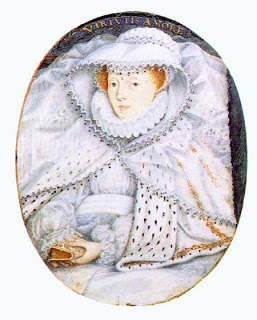
This portrait by Hilliard was identified as Mary, Queen of Scots, in the 18th century, although there is still some dispute.
The inscription 'Virtutis Amore' is an anagram of the name 'Marie Stouart.' The style and costume indicate it was actually made after her death as a memorial portrait following her execution in 1587.
I love the transparency of her veiling and the way Hilliard has treated all the different shades of white. I imagine it must have been very difficult to paint something so detailed after the sitter is dead - not to mention spooky!
Miniatures were often given as love tokens or signs of political loyalty. Some portraits have a hidden symbolic meaning that has been lost to us, such as this young man against a background of flames, holding a portrait of a lady. Perhaps he was indicating a flaming passion, or perhaps survival from a catastrophic event.
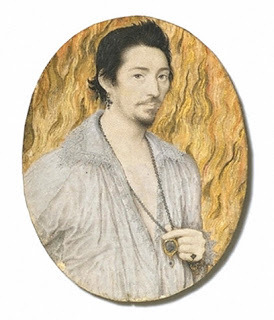
The art of limning was passed down from master to apprentice. Hilliard was first apprenticed to Robert Brandon, a Goldsmith in Westcheap at the Sign of the Gilt Lion and Firebrand. (What a great name!)
In his turn Hilliard employed Isaac Oliver as his apprentice, and he also became very fashionable in Court circles, almost ousting his master. Isaac Oliver's family were Huguenots and fled France to escape religious persecution. He became known for his realistic treatment of children and his slightly less formal portraiture. Below you can see delightful portraits of two Elizabethan girls.

In The Lady's Slipper, Alice's father encourages her to take up miniature painting. Alice finds the techniques and scale of the work too exacting and decides instead to study botanical painting. However, I loved looking into the art of the miniature and really came to appreciate the skill involved in these small jewel-like portraits. Pictures are courtesy of the V&A museum.
October 6, 2011
Reading Guides - extra value for your readers, and how to write one
 I am nearing the end of proof-reading my new novel, The Gilded Lily, and have decided to make a Reading Guide for it. When I brought out The Lady's Slipper, St Martin's Press asked me to put one together and I really enjoyed it. I thought of it as a bit like the extras on DVD's - the "Making Of" or "Behind the Scenes" that seems to so often accompany a film.
I am nearing the end of proof-reading my new novel, The Gilded Lily, and have decided to make a Reading Guide for it. When I brought out The Lady's Slipper, St Martin's Press asked me to put one together and I really enjoyed it. I thought of it as a bit like the extras on DVD's - the "Making Of" or "Behind the Scenes" that seems to so often accompany a film. It gave me a chance to tell the reader what inspired the book and to give some historical background that would help with their understanding. St Martin's Press suggested a really good format, so I thought I'd share it with you. If you are about to self-publish your book, why not add a Reading Guide, an added extra for your readers which will illuminate, educate and entertain.
Here are some suggestions for content:
The story behind the story.What inspired you to write that particular book, and how does it relate to your career/hobbies/skills? This is a story, so take as much care as with your book itself to make it a good story. Perhaps there was an interesting incident whilst you were writing it, or a sudden realisation that made writing the book essential.
The historical or technical background to your bookA chance to help the reader understand the context of your book, when and where it was set. I remember reading Geraldine Brooks's reading guide in Year of Wonders in which she described how living in a small village made her understand the tensions of the closed-off village of Eyam during the plague. I used mine to explain about the tensions of the English Civil War, particularly for US readers who only know about the US Civil War and little about the English Civil War.
A Meet the Author profileJust what it says, a little bit about yourself, especially anything that relates to your writing. You can say where you live or were brought up, something of your non-writing life too will give the impression of a well-rounded person. A good way is to ask someone else to interview you, the answers will sound more natural and less like you are selling yourself.
Fun FactsEven in a novel there may be interesting facts to highlight for the reader. For The Lady's Slipper I could have chosen fun facts about shoes, or about Restoration fashion, or even "Gruesome Facts" about the Civil War, but chose instead to appeal to gardeners and flower lovers by giving them snippets about orchids. Here are my examples:
The lady's slipper orchid is also known as American Valerian, Nerve Root, Camel's Foot, Steeple Cap, Noah's Ark, Two Lips, and Whippoorwill's Shoe. One of the most famous, endangered wildflowers in the United States is the pink lady's slipper,Cypripedium acaule. But it is officially endangered in only two states: Illinois and Tennessee. Georgia lists it as "unusual." New York lists it as "exploitably vulnerable." But in the other twelve states it is not listed at all! Even wild flowers like this one can be quite common in many places. The Endangered Species Act required that each state create its own list of plants (and animals) that need protection within its (state) borders. These lists are updated regularly. You can find out which plants are endangered in your state by visiting www.americanmeadows.com. One of the earliest books about North American plants is from Jacques Philippe Cornut's Canadensium Plantarum. Published in France in 1635, it features an illustration of a yellow lady slipper. Cornut himself never visited America, though he received imported New World seeds and plants for his botanical garden in Paris. See illustration below.And yes, a picture is a good idea. Even a black and white picture adds a little bit extra. It could be a photo of you, or something else relating to your book.
Related ReadingThis could include books that have directly influenced your own book, or ones on a related theme or from a similar period. It is nice to explain why you chose them or how the writer influenced you. See my reading guide for examples. I really loved this part and found it hard to choose only ten books. But I decided I wanted to pique the readers' interest, not drown them!
Discussion questionsMake sure these are a mixture of general and easy, such as "discuss the Character of X. What does he contribute to the novel?" and harder and more exacting, such as "In what way does the language of the novel reflect X's obsession with food?" That way, your questions will suit a wider range of people and groups. Don't be afraid to highlight your major themes through questions. Sometimes readers read the Reading Guide first, so it can help to point readers to your major concerns, whether your book is deep literary fiction or light entertainment.If you feel your book has no deep themes in itself, make your questions more about the characters, or ask them to compare the characters' lives with their own.
Your next bookDon't forget to mention your next book somewhere. I nearly did!
Hope you enjoy writing yours as much as I did mine. If you are a writer with another example, please add a link to it in the comments below. Thanks!
You can look at my whole Reading Guide here
October 4, 2011
Quaker Week - The Strong and Silent Type
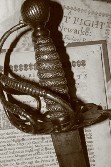 Richard WheelerLike all my favourite heroes he is handsome, strong and capable, but unlike most other heroes when the novel opens he has just become a "seeker after Truth" or a Quaker. Today we tend to view the Quakers as quite conservative, but in the 1650's when the movement began they were seen as dangerous, radical, even insane. Through the latter half of the 17th century and beyond they were persecuted for their beliefs which were seen as challenging the stranglehold supremacy of the church. Even when they fled to the New World, the persecution continued.
Richard WheelerLike all my favourite heroes he is handsome, strong and capable, but unlike most other heroes when the novel opens he has just become a "seeker after Truth" or a Quaker. Today we tend to view the Quakers as quite conservative, but in the 1650's when the movement began they were seen as dangerous, radical, even insane. Through the latter half of the 17th century and beyond they were persecuted for their beliefs which were seen as challenging the stranglehold supremacy of the church. Even when they fled to the New World, the persecution continued.Richard Wheeler was brought up as the wealthy son of a landowner, but his life changed when he followed Cromwell and his parliamentary troops in the War against the King. Richard saw this as a battle for the common man and democracy, so that ordinary people could have more control over their land and property. During The Civil War the English nation tore at its own throat and the battle of brother against brother claimed thousands of lives. Richard Wheeler was brought up as the wealthy son of a landowner, but his life changed when he followed Cromwell and his parliamentary troops in the War against the King. Richard saw this as a battle for the common man and democracy, so that ordinary people could have more control over their land and property. During The Civil War the English nation tore at its own throat and the battle of brother against brother claimed thousands of lives.
 On the left you can see a painting of Oliver Cromwell at the Storming of Basing House by Ernest Crofts RA.
On the left you can see a painting of Oliver Cromwell at the Storming of Basing House by Ernest Crofts RA.Basing House was attacked by Parliamentary troops on three occasions. The final assault came in August 1645 when 800 men took up position around the walls. Between forty and a hundred people were killed. Parliamentary troops were given leave to pillage the house and a fire finally destroyed the building.
Richard fought for Cromwell against his own ruling class, but the horrific bloodshed he witnessed made him vow never to take up arms again, and led him to join the fledgling Quaker movement which had made a pledge for peace. Quaker meetings are a "sitting in silence" - but the restless man-of-action Richard finds the silent reflection both refreshing and difficult. He remembers his part in the atrocities of war and wrestles with his conscience, particularly as he finds he is falling for Alice, his artist neighbour. Not only does she have radically different views from his own, but also she is a married woman.
Giving up his fine things to live a simpler life – leaving behind his luxurious lifestyle and fine clothes, is not nearly as easy as Richard anticipates, but harder still for an active man is the idea of "turning the other cheek" when threatened or challenged. The seventeenth century was a violent and bloodthirsty period, a period in which hangings and burnings were commonplace entertainment, and Richard is trained as a swordsman in an era where to be manly is to be able to handle oneself well in a fight.
So what happens when Richard becomes locked in a bitter battle against his former childhood friend, and worse, when the life of the woman he loves is in danger? Will Richard fight to defend her, or will he stick to his Quaker vow of non-violence?
 My research for Richard Wheeler took me to fields where the Civil War was fought, to the Armouries Museum at Leeds, and to libraries where I looked at Quaker journals and George Fox's diary.
My research for Richard Wheeler took me to fields where the Civil War was fought, to the Armouries Museum at Leeds, and to libraries where I looked at Quaker journals and George Fox's diary. Richard Wheeler's House was based on Townend in Troutbeck, Cumbria which was built in 1645. (see left)
You can find out more about Richard by reading The Lady's Slipper!
"Top Pick!" RT Book Reviews"Highly recommended" Historical Novels Review"Women's fiction at its best" - History and Women
September 29, 2011
The Borrower by Rebecca Makkai
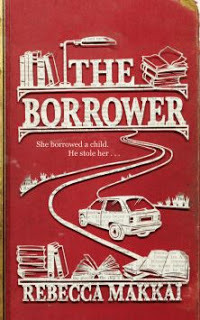
Sorry about the white background, which seems to happen if I copy from a word document - no idea why.
This is a very well-written book, which will appeal to the literary-minded and to book lovers everywhere. A homage to a childhood of books, and examples of their power pepper this story in which a librarian is abducted by a child.(Those who say it is the other way round have missed the point, the child is kidnapping the world of books in my view.)If you liked "Matilda" as a child, then you will probably enjoy this.
Ian is the book-mad ten year old who hides out in the library, and Lucy the librarian who wants to 'save' him from the homophobic Christian sect his parents have become involved with. The characters of Ian and Lucy are complex and not easily pigeon-holed; at times the reader is pleasantly confused as to who is the adult and who is the child during their extended Road Trip through most of America. But this is like life, and feels refreshingly honest. The journey itself is somewhat aimless, and for me this is the only weak point of the book, that the middle seemed a little too long, but then the plot soon picked up again and I was once more hooked.
If you are an evangelical Christian, then you may have to consider if it is for you, as the fundamentalist parents and Pastor Bob, who wants to rehabilitate gay teenagers back to the straight and narrow are truly gruesome. However, I do not feel the book is deliberately anti-Christian.I feel that Makkai made the choice she did for a reason - some Christians use what is written in a book to determine their behaviour, and say the B
ook is the literal truth. What Makkai is pointing out is that in the end it is only a book, written on paper, like every other book in the library. And as such, the child (or anyone) could always choose other literature as their raison d'etre. At the same time Makkai shows how real events become fictionalised (as in the Bible) by including an episode from Lucy's father's and grandfather's past where exactly this happens, and the real events grow into something more than they were.
In short, this is an intelligent novel, one to make you think about the power of books. Definitely worth discussing in a reading group, and spending your money on. I look forward to reading Makkai's next.
Unpublished Novel Competition - Crime
Have you a print-ready novel sitting in your drawer? Then what have you got to lose?
This is a genuine, no fee competition that stretches over 12 months. SEPTEMBER UNPUBLISHED FICTION AUTHORS PRINT READY COMPETITION
This competition starts SEPTEMBER 2011.
More details here:
http://www.nawe.co.uk/DB/jobs-and-opportunities/unpublished-fiction-author-competition.html
September 18, 2011
Roman Ruins and the Fall of Nations


I've recent
 ly come back from Seville where I was researching for my next book, which will be set in partly in 17th century Spain. Seville is a city that was first under the Moorish and then under Christian rule. Its Cathedral still retains the tower of the old mosque, where the muezzin would call the faithful to prayer, incorporated into the gothic splendour of its catholic vaults and pillars.
ly come back from Seville where I was researching for my next book, which will be set in partly in 17th century Spain. Seville is a city that was first under the Moorish and then under Christian rule. Its Cathedral still retains the tower of the old mosque, where the muezzin would call the faithful to prayer, incorporated into the gothic splendour of its catholic vaults and pillars.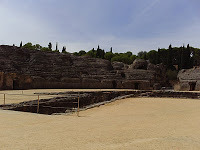 What I didn't realise though, was that Seville was also the third largest Roman city in the empire, after Rome and Alexandria, settled in 206BC. It was the birthplace of Hadrian who spent his youth there.The excavated ruins, now known as Italica, lie a little outside Seville, and up until this century were ignored as ruins of little interest. These ruins include a very well preserved amphitheatre where you can walk the path the gladiators took from the passageways up to the searing heat of the arena. A truly terrifying spectacle to see the ranks of seats and imagine the roar of the crowd, the amphitheatre is truly monumental and seats 25000.
What I didn't realise though, was that Seville was also the third largest Roman city in the empire, after Rome and Alexandria, settled in 206BC. It was the birthplace of Hadrian who spent his youth there.The excavated ruins, now known as Italica, lie a little outside Seville, and up until this century were ignored as ruins of little interest. These ruins include a very well preserved amphitheatre where you can walk the path the gladiators took from the passageways up to the searing heat of the arena. A truly terrifying spectacle to see the ranks of seats and imagine the roar of the crowd, the amphitheatre is truly monumental and seats 25000.There are also thermal baths, and some of the most beautiful intact mosaics I have ever seen, inside the villas of the roman dignitaries. One shows the seven gods of the days of the week, (shown above) and one over thirty different species of birds.
Unfortunately, the bulk of the Roman town, including its Forum and many other important buildings lie underneath the current suburb of Santiponce, and cannot be excavated without demolishing the new town. To uncover some of the Temple remains, householders were re-settled to allow archaeology to take place. It is staggering to think that until a recent preservation order was put on the site, many of the mosaics were removed complete into the hands of amateur enthusiasts or wealthy collectors. Below you can see a mosaic of the life of Zeus about to be removed by a private collector.
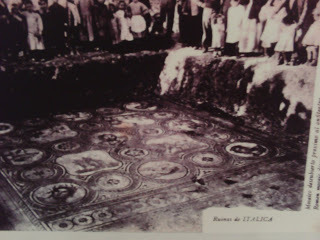 What struck me most about this was how the city of Seville has been held by three very different sophisticated societies each of which has cannibalized the previous culture for its own ends. Moorish tiles are everywhere, despite the fact the Moors were forcibly expelled from Spain in the 17th century. Seville's modern bypass was built using some of the stone from the Roman ruins of Italica, as were many civic buildings right up until the thirties. Walking Seville you come across the Columns (a remnant of the Roman Era, topped by Caesar and Hercules), a little further and you can immerse yourself in the moorish architecture of the Alcazar Palace, and a few more strides takes you to 17th century Baroque Seville, all cheek by jowl. This is what makes a city fascinating, in my view, and it is interesting to think that my 17th century characters would have known Italica as simply "old Seville" - a ruin, marked on maps as a heap of old stones of little importance or significance.
What struck me most about this was how the city of Seville has been held by three very different sophisticated societies each of which has cannibalized the previous culture for its own ends. Moorish tiles are everywhere, despite the fact the Moors were forcibly expelled from Spain in the 17th century. Seville's modern bypass was built using some of the stone from the Roman ruins of Italica, as were many civic buildings right up until the thirties. Walking Seville you come across the Columns (a remnant of the Roman Era, topped by Caesar and Hercules), a little further and you can immerse yourself in the moorish architecture of the Alcazar Palace, and a few more strides takes you to 17th century Baroque Seville, all cheek by jowl. This is what makes a city fascinating, in my view, and it is interesting to think that my 17th century characters would have known Italica as simply "old Seville" - a ruin, marked on maps as a heap of old stones of little importance or significance.September 16, 2011
Goodreads Lists featuring The Lady's Slipper




 What's the book you can't wait to read this summer?
What's the book you can't wait to read this summer?



 Books You Wish More People Knew About
Books You Wish More People Knew About
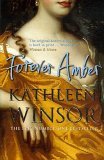
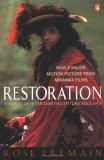

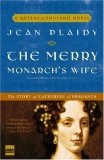 Historical Fiction: England's Second Civil War and Restoration
Historical Fiction: England's Second Civil War and Restoration



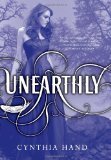 What will you read this year (2011)
What will you read this year (2011)
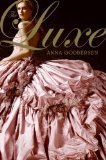


 Dresses To Die For!
Dresses To Die For!



 What Should I Read in 2011?
What Should I Read in 2011?



 What To Read Next
What To Read NextSeptember 13, 2011
Review of The Rhetoric of Death by Judith Rock
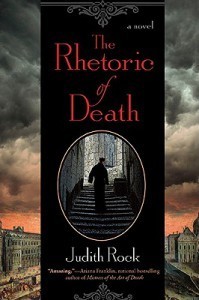 Judith Rock has certainly led an eventful life. She has been a dancer and choreographer, a police officer in the NYPD and also holds a doctorate in art and theology. You might think it would be difficult to weave ballet, crime and Jesuit theology into one novel, but Judith Rock does it with aplomb.
Judith Rock has certainly led an eventful life. She has been a dancer and choreographer, a police officer in the NYPD and also holds a doctorate in art and theology. You might think it would be difficult to weave ballet, crime and Jesuit theology into one novel, but Judith Rock does it with aplomb.Her main character, the delightful Charles du Luc, is rather too good looking to stay as a Jesuit priest without encountering romance, and without it causing him problems. He is also blessed with a fierce intelligence which he puts to use to solve the murder of a young boy at the Jesuit college of Louis le Grand where he is employed to teach Rhetoric.
The story has many notable and well-drawn characters, most of whom, including the police officer that dogs Charles' investigation, were real people of the time. The past is brought beautifully to life in Rock's evocation of 17th century France. She obviously knows the geography of Paris well and the college feels authentic. I had no idea that colleges put on ballets of such lavish proportions, but evidently they did.
This is a novel with texture - a fast-moving exciting plot which keeps you guessing who-dunnit, alongside the deeper theological questions of who to serve when the holy orders demand one thing and your conscience another. There is a dash of politics and romance too, which made the novel my perfect in-flight entertainment travelling home from Seville.
Judith Rock's new novel, "The Eloquence of Blood," another in the Charles du Luc series, is out now and you can hear Judith talking about it on my other blog Royalty Free Fiction. I chose this earlier book on the basis of her interesting article and wasn't disappointed. Highly recommended for francophiles and historical crime fans.
September 10, 2011
Finding your readers
From this, I can take it that those who read on e-readers are not "my readers" - i.e the readers that will love my book. Either that, or that those who buy e-books regard all books as more disposeable, and are quick to give up on a book if they don't love the opening chapter, and are therefore rating all books more harshly than those people who buy paper books. But it is obvious that there is a distinction between the paper book buying public and the e-book buying public at least in my corner of the historical fiction market.
So, it seems to me that finding your reader in this tide of e-books is not as easy as just exposure. It is not just a matter of getting the book to the notice of those who are internet-savvy. People are buying the kindle version or e-book version, but how do I target the thinking reader, perhaps someone who reads literary fiction as well as popular fiction and has a broad diet of reading, not just historicals?
Someone suggested that I should blog about what is of interest to my readers, and this would build an audience for my work. This is dead easy if you are a non-fiction writer. If your book is about horse -management, then you blog about horses. So - blog about history, you might think! And of course I do, but fiction readers are not necessarily as interested in my research as I am, and those of my readers who are also writers are too busy doing their own historical research to want to read mine!
But the thing I like doing the best is discussing books with other book-lovers. I've decided that this is probably the best way to bring my book to people's attention - by simple word of mouth. And I am more than happy to meet readers face to face, give talks to book groups, the WI, libraries or any other place where readers meet. Any takers?!
September 8, 2011
Three Question Thursday
I put three questions to Zoe Saadia, who is the author of a book about Pre-Colombian Native America, a topic which has had scant attention from other historical novelists.
Tell me 3 things that helped you as a writer.
Well, it's hard to define who or what helped me first.
· My obsession with anything Native American began as soon as I learnt to read (not that I lived anywhere near this continent). So probably this obsession comes as the first drive of my writing career.
· Relocation to California when I was in my mid twenties, utterly fed up with being an accountant, was another push that could not be ignored. As a girlfriend (a wife somewhat later) of a relocated software engineer I was offered to do nothing but have fun for a few years. Some of the relocated wives went for a life of shopping and homesick boredom; I disappeared into the wonderful Californian libraries.
· And of course, my family – my husband, my parents, even my kids these days – are of an invaluable help. They kept believing in me all those years when I worked on the research, then the first (unsuccessful) novel, through the writing classes, then this current novel, then the process of translating it into English, refusing to accept the polite "not interested" from my countrymen publishers, then polishing it and so on. It took years of frustration and no-income and I'm not sure I would have persisted if not for the fact that my husband continues to push and give moral support.
Tell me 3 things you hope your readers will enjoy about your book .
· My book deals with the interaction of nations in pre-Columbian North America, which, for some reason, catches people by surprise. The general assumption is that the Americas were hardly populated and not cultivated at all, while the exact opposite is true. I think the reader would like to discover some new, unknown cultures and even empires.
· The story comes before the history. The history lesson my novel is teaching is written fairly lightly and not "aggressively". The novel is full of action and drama, with a fair amount of love and betrayal – it could easily fit in another historical setting, such as Medieval Europe or Ancient Greece. It's just a novel, regardless of the message I am trying to smuggle along the way!
· This novel is getting positive reviews. The storyline is strong and the characters are vivid and full of life – worth getting acquainted with!
Tell me 3 things that have inspired you in life.
· As an avid reader and writer of historical fiction, I can say that I drew much inspiration from great writers such as Colleen McCullough and James Clavell.
·As a history geek, I'm inspired by great generals such as Caesar and Hannibal (inspired to do what, I haven't quite figured out yet); by great politicians - Caesar again, before his infamous dictatorships, and the Great Peacemaker of the Iroquois; and, to leave aside the fighting spirit, by a few great scientists such as Eratosthenes for his early (and by our standards amazing) discoveries.
· I also draw inspiration from some people around me who take life with an amount of good, healthy humor.
By 1,250 AD the Great Mound of Cahokia on the Mississippi River was the centre of the largest North American empire, populated more densely than the 13th-century London. A hundred years later the Great Mound lay abandoned.

"The Cahokian" is a historical novel, based on the final years of that empire.
The chief warlord of Cahokia - a magnificent center of the Mississippians - is embroiled in a dangerous political conspiracy. An attempt to escape the consequences brings him northwards, up the O-hi-o River and into the lands of the powerful League of the Iroquois, where his life takes an unexpected turn.
Thanks Zoe, for answering my questions.Anyone else who would like to answer the same three questions, just email me



